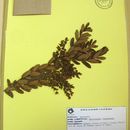Description
(
Inglês
)
fornecido por AmphibiaWeb articles
Female: 29-32 mm, Male: 22-25 mm. Dorsum greyish dark brown with many small ocher or yellowish spots. The belly and chest are orange, with irregular dark blotches. As all the species in the M. tumifrons group, this toad has a conspicuous frontal swelling.
- Prigioni, C. M., and Langone, J. A. (1986). ''Melanophryniscus orejasmirandi n. sp. un nuevo Bufonidae (Amphibia, Anura) de Uruguay, con una clave para las especies del grupo tumifrons.'' Comunicaciones Zoologicas del Museo de Historia Natural de Montevideo, 159, 1-11.
- Prigioni, C. M., and Langone, J. A. (1990). ''Descripción de la larva de Melanophryniscus orejasmirandi Prigioni & Langone 1986 (Amphibia, Anura, Bufonidae).'' Comunicaciones Zoologicas del Museo de Historia Natural de Montevideo, 173, 1-9.
Distribution and Habitat
(
Inglês
)
fornecido por AmphibiaWeb articles
This species is only know from a few localities in southern Uruguay. The habitat is at the top of hills, in rocky soils.
Life History, Abundance, Activity, and Special Behaviors
(
Inglês
)
fornecido por AmphibiaWeb articles
Little is know about the natural history of this species. Females with mature eggs were found during cold months (May to August). These toads seem to be explosive breeders with diurnal activity after heavy rains. This species exhibits the typical defensive behavior of the genus "Unkenreflex".
Life History, Abundance, Activity, and Special Behaviors
(
Inglês
)
fornecido por AmphibiaWeb articles
The populations of M. orejasmirandai could be threatened by consequence of habitat loss.

